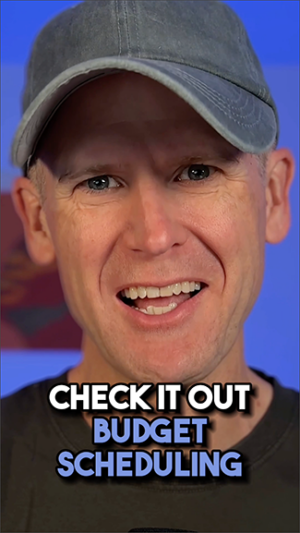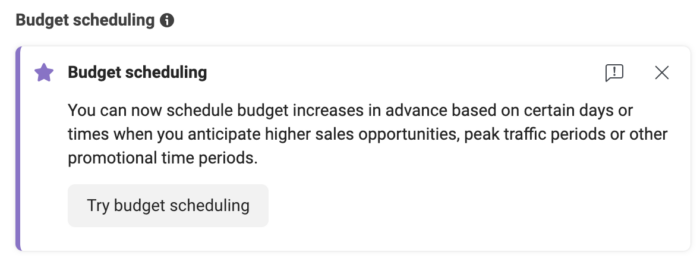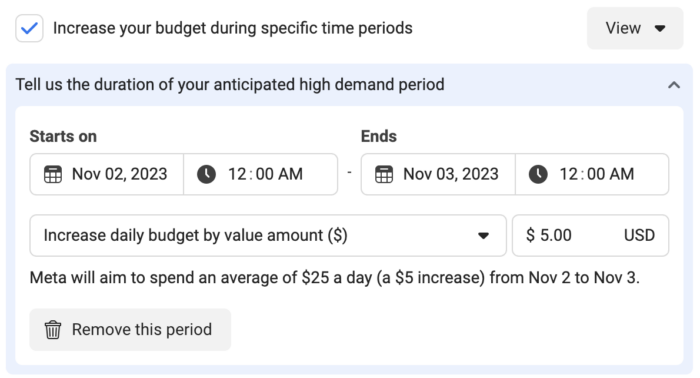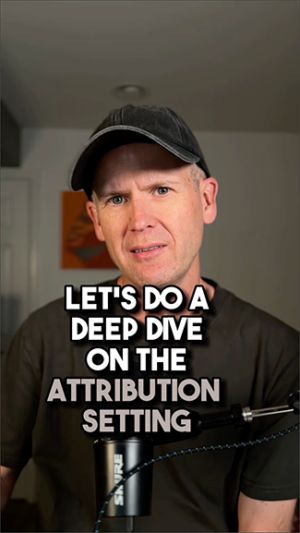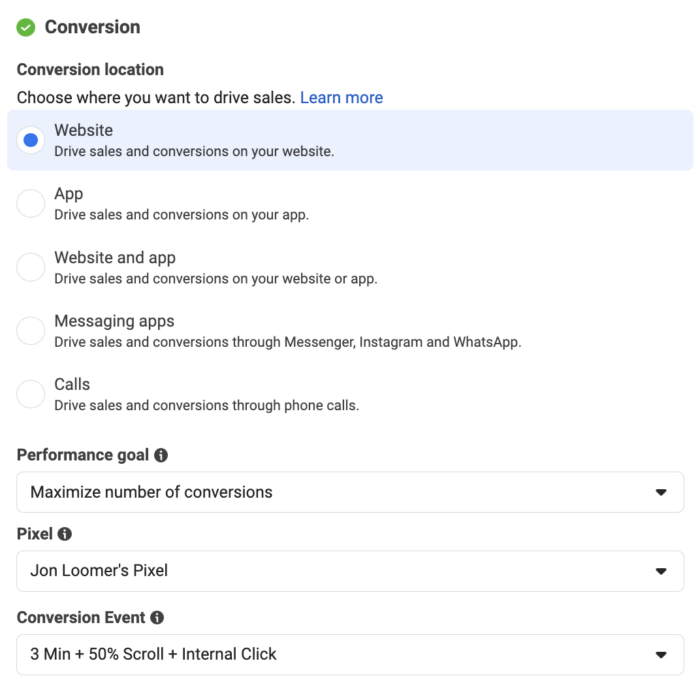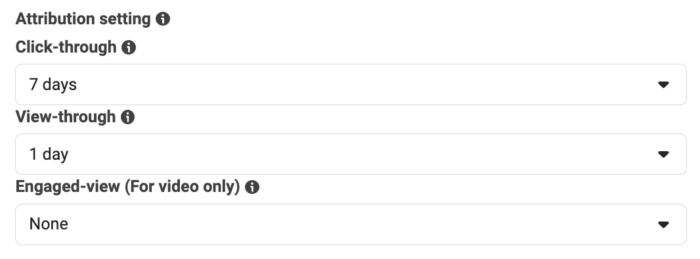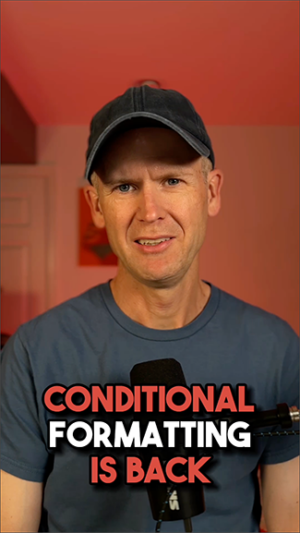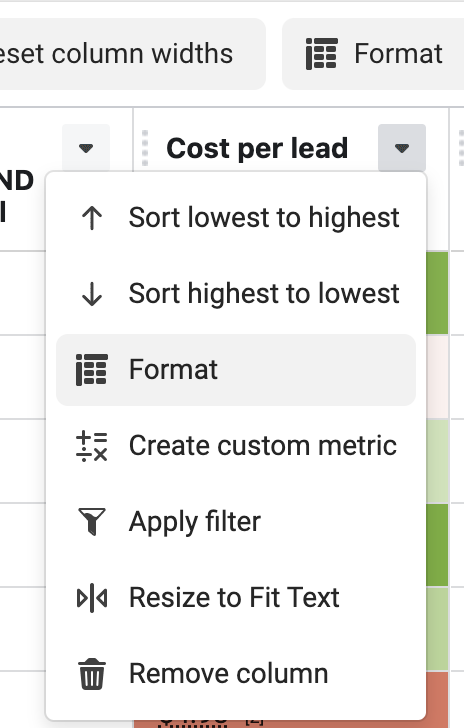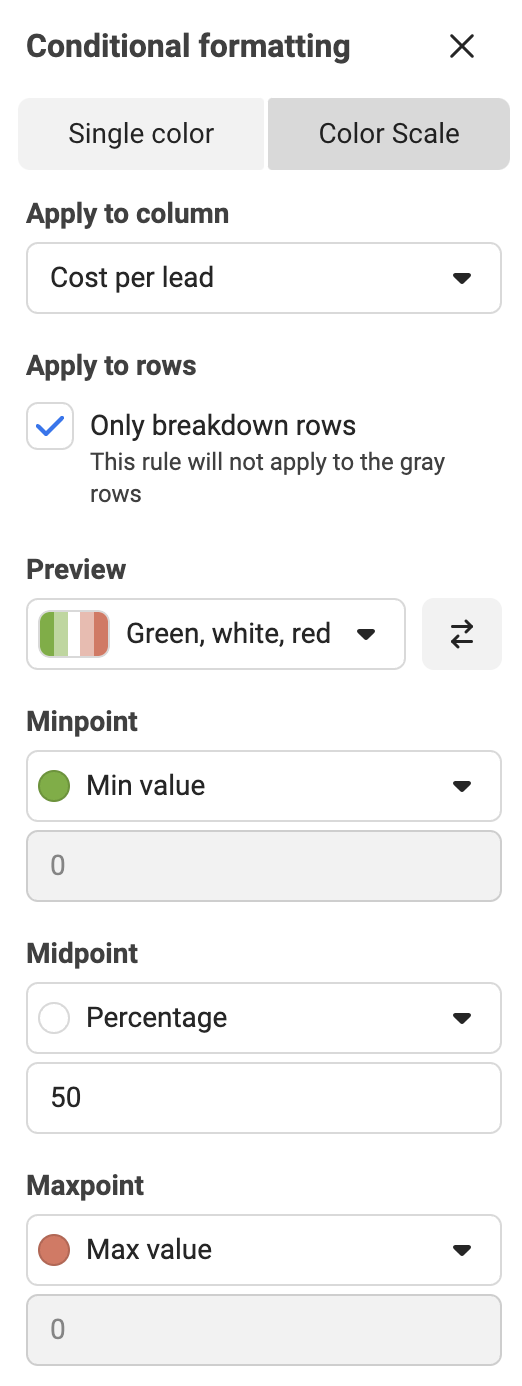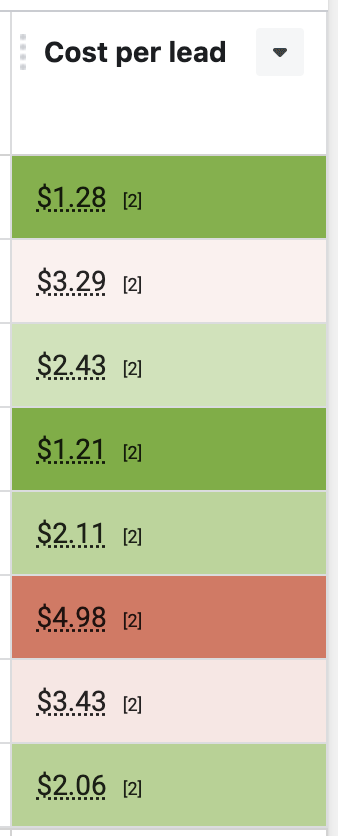Data and tools have revolutionized the world of marketing. It’s become an invaluable asset in targeting audiences and building personalized experiences for individuals.
While it’s an indispensable tool in company decision-making, it doesn’t necessarily lead to authentic connections. Understanding your customer does that. That’s why it’s critical to infuse empathy into marketing – to deliver a truly customer-centric approach.
Empathy is considered a key component of emotional intelligence, a crucial skill to have as a leader. Empathy is also a fundamental emotion that marketers need to show to do their jobs effectively.

Source: OptinMonster
This sentiment is echoed loudly in an article by Noah Fenn: “Despite All This Data, Empathy is Still the Greatest Tool in a Marketer’s Toolbox.” It inspired a lot of my thoughts over the years.
While we may have more opportunities to connect with customers today (through social media, content channels, and technology), building trust can be more challenging than ever. When your brand doesn’t show empathy towards your audience or customers, you’re losing business. Empathetic marketing is the way forward.
To become more empathetic, step into your customers’ shoes to better understand what they’re experiencing. Then you can give them exactly what they want or need to live better lives.
Quick Takeaways:
- Empathy is a vital component of emotional intelligence – a skill every leader needs to succeed in today’s world.
- Marketers can suffer from “collective amnesia” when attempting to connect with their target audiences.
- Data is essential and highly valuable, but marketers must balance it with empathy.
- Data can never replace real human connections.
- We should use empathy in marketing to drive success.
What is Empathetic Marketing?
Empathetic marketing is seeing through the eyes of your customers. To be truly customer-centric, marketers must gain a deep understanding of who their customers are, the challenges they’re facing, and what motivates them to act.
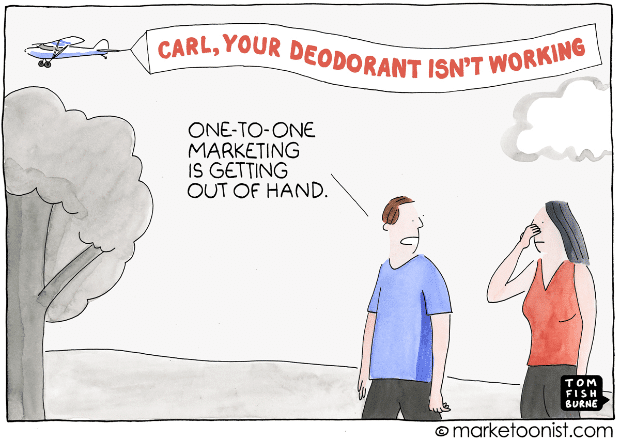
We must learn to think like our customers and walk the steps they’ll take to make a decision that improves their lives. After you understand what motivates them, you can give them what they want or need to solve a real problem they’re facing.
Provide them with content, advice, educational resources, and tools to directly address their situation and give them clarity. To incorporate empathy into your marketing strategy, follow these tips.
- Always focus on your customer. Put them first. Help them find a solution to their problem by first understanding what they desire. Show your interest in helping and listening. Speak to their emotions to create authentic connections and build stronger relationships.
- Have conversations. Rather than pushing your brand on someone and telling them why they need you, show them how you’ll help them achieve a desired goal or outcome. Listen as well as speak.
- Give your leads the content they’re seeking. Don’t guess. Get to know your potential and current customers so well that you know without a doubt that they crave the content you create and offer. If your content isn’t helpful, it will be useless.
- Be a good listener. Understanding buyer intent involves seeing past what’s spoken. It involves empathetically listening for cues and motivations behind what someone says or does. This will help give you more context and understand why people are communicating certain emotions. Paying attention to emotional triggers – like guilt, fear, or trust – can help you craft compelling marketing messages that get to the heart of an issue.
Why Successful Marketing Is More Than Just Advertising
In recent years, we’ve seen a trend towards companies slashing their advertising budget. This is in response to the growing ineffectiveness of traditional advertising, as consumers have become desensitized and even distrustful of it.
Alongside the reduction in the effectiveness of advertising, consumers are more likely to do their own research about the products they buy. There is more information available online than ever before, and research has shown that the vast majority of buyer research takes place before the buyer contacts the vendor.
In other words, consumers are educating themselves, and they don’t want to be told over and over again how great a product is. Instead, they need helpful information so they can research and ultimately make their own decisions on which products are the best.
Coca-Cola made headlines a few years ago when they decided to ditch the role of CMO. When their Global Chief Marketing Officer Marcos de Quinto left the company, they decided not to reinstate the position for some period of time.
Instead, they hired a “Chief Growth Officer” – a position that was filled not by a marketer but by a sales executive, Francisco Crespo, who took on global marketing as part of his role in the face of the “fast-changing needs of our consumers, customers, system and associates around the world.”
The idea behind eliminating the CMO role was not because the brand didn’t need marketing. Rather, they wanted to change their marketing approach from creative brand advertising towards business growth and satisfying customer needs better.
Coca-Cola decided to move away from the previous CMO’s product-focused marketing approach (Mr. de Quinto had previously said at a conference, “If you want people to love to drink Coca-Cola, please show in your commercial people who love drinking Coca-Cola.”) and focus on the brand with a broader approach to marketing.
As David Packard said in one of my favorite marketing quotes:
“Marketing is too important to be left to the Marketing department.”
When you put your marketer’s hat on, ensure you don’t ditch your “human” hat. While you can learn a considerable amount about your customers by analyzing data – their preferences, motivations, demographics, etc. – being customer-centric requires a special ingredient. Can you guess what it is?
Why You Need Empathy in Marketing
Fenn was in charge of video strategy and sales at AOL. In his article, he describes the complexities of video content marketing. Many industries suffer from the same challenges he discusses. But the truth is, the way you deliver content to your audience should be simple, not overly complex.
You could spend enormous amounts of time trying to design the perfect campaigns based on your data. That doesn’t mean it will resonate with your audience. Depending too much on your data could leave you with blind spots that prevent you from developing new, innovative ideas.
By coupling data with customer empathy in marketing, you could see massive results. You can create something highly targeted and meaningful.
We learn how to empathize with others as children, but it’s easy to lose this skill as an adult. It doesn’t mean we don’t care about others. Nor does it mean we’re born with a compassion gene that eventually fades away or goes dormant as we face harsh realities throughout our lives.
Empathy is a skill we can acquire, so there’s hope for us all. While it’s true that social factors can impact our ability to attain this skill, we can learn to overcome our environments – even when they’re full of mean people who suck.
Relearn how to be empathetic by implementing key elements into your marketing tactics. Let’s face it—most marketing sucks. It’s not exciting, relevant, or beneficial. It’s often full of a lot of BS that avoids empathizing with customers. Your job is to turn things around and stand out from the crowd.
Learn how to create empathetic content and start counting the marketing ROI.
The Importance of Empathy for Brand Building
Coca-Cola’s previous CMO firmly believed that marketing focus should be on the product, putting the coke bottles front and center of the advertising. He said, “We have been just talking about the brand, but talking very little about the product.”
But, what does showing ads of people drinking Coca Cola do for the brand? Does seeing a picture of someone drinking a Coke make you buy more Coke? Who would you rather buy from? A brand that invests heavily in product-based advertising, or a company that shows they care about their customers and want to have a positive impact on the world?
Coca-Cola has been working on increasing its brand reputation by emphasizing their commitment to corporate responsibility. They’re achieving this by concentrating more on marketing some of their other sub-brands, such as the Honest range of organic, fair-trade beverages, and campaigns focused on recycling.
Coca-Cola may have some work to do to change their brand associations from sugary fizzy drinks and plastic bottles to a company dedicated to making the world a better place. But, by demonstrating they empathize with customers’ needs and values and refocusing their marketing efforts around these values, they’re investing in building a long-term brand-customer relationship rather than aiming for short-term sales.
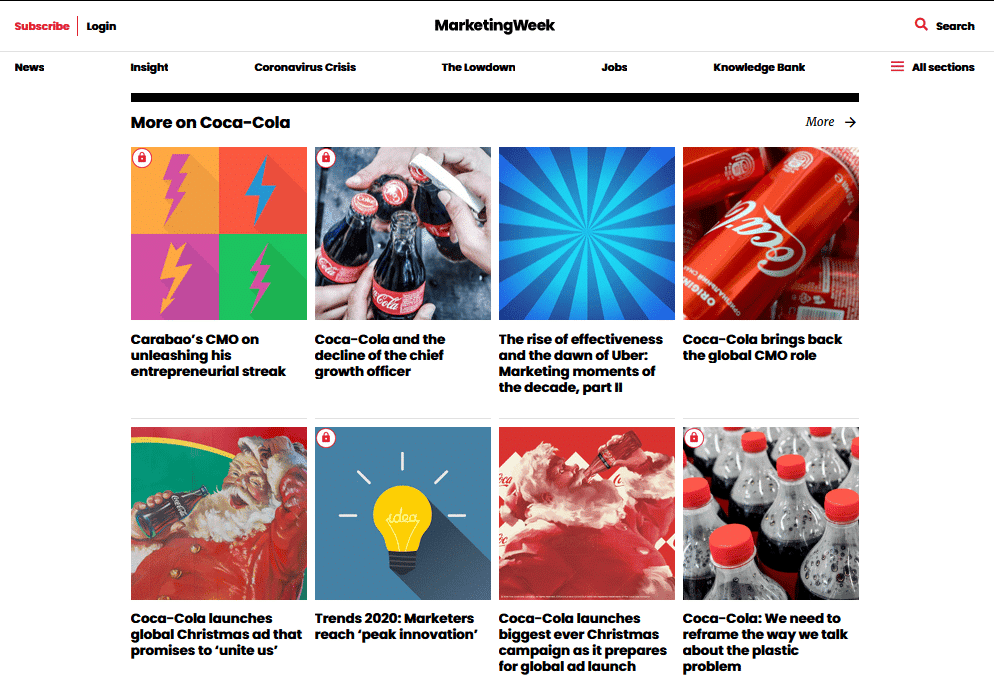
To succeed and thrive, today’s CMOs and marketing teams must take an empathetic, holistic approach to their marketing strategy and ask what they can do for their customers instead of how they can make more money.
How to Become an Empathetic Marketer
Empathy-based marketing is built on trust. Do your customers trust your brand? Does it even matter?
It absolutely does. We used a brand trust survey, The Edelman Trust Barometer Special Report: In Brands We Trust, to gather some interesting tidbits on the importance of trust in marketing.
- Trust is nearly as valuable as quality and value. Consumers ranked it as a critical factor in making a purchase decision.
- Most people somewhat distrust brands they buy from. 53% of respondents claim they can spot when a company is being dishonest.
- Consumers place more trust in influencers who are relatable than those who are the most popular.
- Organizations that care about having a social impact resonate more with buyers than those that don’t. 53% of respondents said they expect brands to engage in at least one social issue.
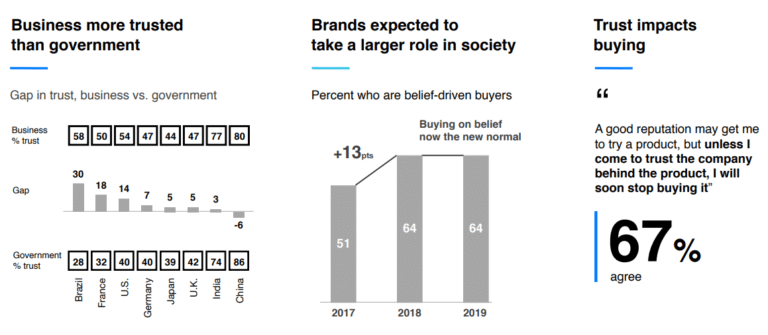
Each of these findings brings us back to empathy in marketing. To build trust and provide transparency for your customers, look at things from their perspective. Then you can start connecting with them from a sincere and authentic place. Ultimately, how you make people feel will either encourage or discourage them from buying from you.
Marketers Are Bad at Empathy
No one will ever say “we don’t focus on the customer.”
Here’s why (even empathetic) marketers fail at customer empathy and how to fix it.
Let me explain:
Dr. Johannes Huttula conducted some research with 480 experienced marketing managers. He asked marketers to step into their customer’s shoes and predict what they would reply in a market test.
BTW – The scientists already knew what the customers would say because they captured the customer’s preferences before the test.
Surprisingly, the more empathetic the marketers felt, the worse they did on predicting customer preferences and motivations. They utterly failed. According to Huttula, the marketers used their own biases and personal preferences (thinking it’s empathy) to predict what will appeal to customers.
I know, crazy right?
Huttula found that telling marketers about their bias helped the correct marketers course. Develop awareness about your own preferences to help you step back and apply customer empathy better.
Why Empathy to Customers Is Essential
Dr. Antonio Damasio said, we not thinking machines that feel rather, we’re feeling machines that think.
Damasio discovered that we make our decisions emotionally. His research showed every decision we make grounded in emotion every single one. This is huge.
As marketers, we’re almost self-centered to a fault when we approach customers.
Today we have more ways of reaching our customers, we have more channels and more content than ever before. But, connecting with our customers (really connecting with them and building trust) has never been harder.
That’s why I believe empathy is a superpower. It’s a superpower for sellers and marketers to connect – to understand another person’s feeling and experience. If we can do that we can relate.
In sum, our personal assumptions kill empathy. And we don’t even realize we’re doing it.
Tips for Empathy-Based Marketing
Here are some ways to build empathy into your marketing strategy for better connections and more significant results.
Apply Empathy
Neuroscientist, Antonio Damasio discovered, “We are not thinking machines that feel, we are feeling machines that think.” Damasio made this groundbreaking discovery: when emotions are impaired, so is decision-making. What does this mean? We need to go beyond logic to understand how our customers feel.
This is particularly important if you have a complex sale where B2B buyers face daunting decisions that involve huge risks. Our customers aren’t saying, “We need solutions.” Instead, they’re saying, “We need to solve a problem” So what would happen if you focused on helping them do just that?
One of the questions I am routinely asked by new clients is, “are we the worst case you have ever seen?” What they are really saying is, “we know we have problems and can you help us. We want to improve.”
Many times the first meeting I have with a client is listening, inquiring and assuring them that all will be ok. It is applying empathy and letting them know that together we will improve.
I spoke with a CEO once who told me, “We have to stop speaking about our platform and begin speaking to our customer’s issues and let them know we understand.” This is empathy in action and he is intent on moving his company in this direction.
Improve Your Website’s UX
I sat with a prospect a few days ago who said, “If you go to our website you have to have a PhD to understand what we do.” She was right. Their site is overly complex, hard to understand and trying to find any kind of content is extremely difficult.
The reality is that in most cases, buyers and customers consume content digitally and if organizations make it hard to find or use overly complex language, it makes it harder to do business.
One executive, I spoke with this week told me, “I am not trying to be insulting, but we look to develop content and design our product so that a high school freshman could understand it. We want it to be super easy for our customers.”
Having long web forms, gating all of your content, making a buyer go through multiple clicks and pages to access content, or making your site hard to navigate are all reasons why customers will look elsewhere.
Organizations need to think about the fact that often the first interaction a potential customer will have with your brand is your website, if it is a poor experience, they may not come back. Having a data driven marketing strategy in place makes it easier to focus on the customer experience.
Focus on Your People
Ever engaged with an employee of a company who hates their job? If you have, chances are you could feel it in the interaction, in the approach they took to you as a customer and it is an all-together negative experience.
One of the places to start in improving customer experience is with your employees. Many companies want to ensure their customers have a great experience but skip over the all to important step of first developing a positive employee experience.
Employees that feel appreciated, are recognized, are given opportunities to enhance their skill set, and given an opportunity to reap the benefits of the organization’s marketing success are employees that bring that positive vibe to your customers. This has to be a foundation for any organization if customer experience is going to be realized.
Customer experience is quickly becoming one of the top buying decision and loyalty factors for B2B customers. Organizations can no longer afford to fail at it and need to move quickly to a customer-centric point of view or be left behind.
Help Instead of Sell
Trying to push a sale by leading with hooks in your messaging won’t help you build trust. Instead, try focusing your content marketing efforts on helping your audience by delivering content consistently that solves relevant problems.
Get in Touch with Your Customers’ Feelings
Empathetic storytelling can help you create a meaningful bond with readers. Creating narratives around real challenges and situations helps customers see themselves in your story.
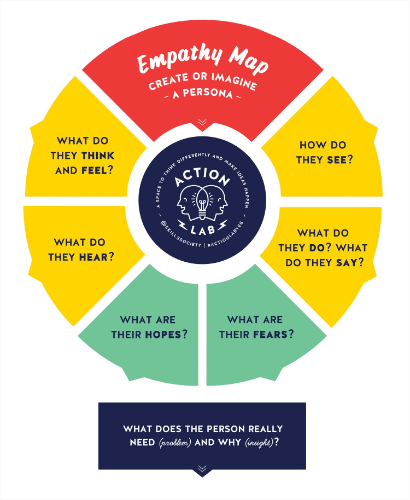
Think Like Your Customer
Step into their shoes and walk through the path they may take when researching and finding a solution to their problem. Doing this will help remove any bias you may have and see from a different perspective.
Focus on How You Can Make Your Customer’s Life Better
Regardless of what you market, it serves a need (or you wouldn’t have a business). Focus on the benefits of your content rather than product or service features. You can develop a brand story to show how your product or service will save a customer time or money, make their process more efficient, or make their life easier.
Be Clear, Not Confusing
Have you ever seen a brand promotion and thought, “What the heck was that?” If your message confuses people, it will also repel them. Even if you’re selling the most complex service or product on the market, your message must be clear and easy for non-experts to understand.
Listen Closely to Your Customers, and Be Willing to Evolve
Listening may be the most vital part of being an empathetic marketer. You’ll learn a lot from your customers – both the happy and unhappy ones. Take time to listen to their frustrations, desires, and constructive criticism. Implement changes as necessary.
Fix the Brand-Customer Empathy Gap
Here’s what I’ve found we can do to fix the customer empathy gap:
- Focus on building a connection before you focus on conversion.
- Consider your assumptions and biases before you do any more new marketing
- Ask yourself, is what you’re communicating really grounded in customer insights?
- Understand the core emotional motivators of your customers
- Design messages and experiences that resonate with these core emotional drivers
- Use agile testing to get actionable customer motivation insights
- Transfer customer insights to different channels and scale up results
Interview with Michael Brenner, Author of Mean People Suck
Just after Mean People Suck was published, I was interviewed by Brian Carroll, CEO and Founder of Markempa. Brian is a well-known researcher and thought leader on empathetic marketing. Here’s the transcript of the interview:
Can you tell us a little bit more about yourself and your background?
Michael: Yeah, sure. Thanks, Brian. It’s a pleasure to be with you today and looking forward to talking about empathy, which I think is so important in today’s landscape. As we get older, I’ve needed to summarize my career much more quickly than I used to. But a 20 plus year career in sales and marketing, and leadership roles in various kinds of companies, large and small. Most recently, about ten years ago, was hired by SAP as their first head of digital marketing. I became their first VP of Global Content Marketing, and mainly helped them modernize the digital marketing approaches that they were taking. Very much taking an empathetic approach like we’re going to discuss.
There’s such a need, I think, for brands to understand. They want to do it I think but struggle with how to get it done and how to change the culture inside their organizations. That’s where I’m focused now. I built Marketing Insider Group, primarily, as kind of a one-man agency for now, but with the point that I’ve been there, I’ve done that, I’ve been inside corporate marketing departments. I understand the politics and the culture challenge that marketers face today, and now I’m dedicating my life to trying to help as many companies, as many brands, as many marketers as I can, to understand how to put themselves in a leadership position by helping their customers.
Brian: That’s fantastic. I came across your article on LinkedIn, and several people forwarded it to me and said, “Brian you should check this out for your book.”
What inspired you to start writing and talking about empathy recently?
What I’ve found is as I talk to senior executives – I have a good story I think we could maybe get to it a little bit later on – but a typical conversation for me might involve, “Hey. This digital world and content marketing, and creating content for customers – we think we get it. Now we need to figure out how to do it.”
Often, I find someone in a position of power (with their arms folded) asking challenging questions like, “Well, how’s this going to help us sell more stuff?” I co-authored a book called The Content Formula, to specifically address this sort of results-based question, which was, how do you show ROI from this approach? In the book, I talk about how you can show a better return on investment with marketing that focuses on delivering content people want.
Even after all those sorts of financial objections are removed, I still found that there was resistance inside a lot of companies. I think we can talk about this in a little bit more depth as well, but there’s a natural instinct inside a business to want to promote itself. That’s counter-intuitive. That’s why I came to this kind of realization that the missing element, and you’ve been talking about this for a long time, is empathy. It’s missing inside corporate cultures and structures.
Empathy is the most counter-intuitive secret to success. Why is that?
For instance, the posts that I put up on Facebook. I don’t do a lot of business content on there. It’s mostly pictures of my kids and the trips we take, and it’s essentially me putting my best face forward to the world. That’s what I think we all tend to do in the social world; that we express to the connections we have. It’s our natural instinct.
I think there’s nothing wrong with wanting people to see that you’re happy and you’re healthy, and you’re doing fun things. That’s the natural instinct we carry with us when we walk into the company, with the companies that we work. The natural instinct of the business person is to want to promote itself and put its best face forward. It’s counter-intuitive to think that you can sell more stuff by not talking about the stuff you sell. That’s why I think empathy is so counter-intuitive.
The most counter-intuitive secret to success in business and life is empathy.
Click To Tweet
Brian: I know it’s something that I struggle with, and I think everyone does when we’re focusing on getting our needs met, whether that’s hitting a number, as you talked about achieving ROI. It’s a challenge, and I think you spoke of this collective amnesia we have. It seems that we change how we think about our customers as we walk into the building and put on our marketing and sales hat.
How can we relate to customers?
Although we’re real people when we walk into our places of work and then forget that we are real people. We forget how to market to people just like us. We walk in; we want to present and promote the companies and the products that we sell. That’s precisely the kind of thing that we as consumers don’t want, right?
Someone heading marketing, who makes an ad buy, is doing that with the knowledge that he might, or she might, hate ads. That’s the collective amnesia, right?
When you’re watching a TV show, you don’t need to see an ad for Chevy 15 times over the course of the 45-minute show, right? But the ad buyer for Chevy is making that decision. There’s a group of individuals generally behind those kinds of decisions, and that’s the collective amnesia that we talk about in the article. We make judgments in the business, as people, that often forget that we’re marketing to real people just like us.
Brian: It’s funny, and I think it’s interesting. As I talk to marketers, we realize just how cynical we can be too. And I believe that it’s just getting out of our heads. We need to put ourselves in the shoes of our customers and remember we are ones (customers) too.
What do you wish marketers and sellers would do more?
I think the counter-intuitive nature of it is that when you help your customers, and I use this line in the article “when you help your customers, that’s the best way to help your business.” I think we often defend our self-promotional actions by saying, “Well that’s the game we’re playing.”
Like you said, we’re skeptical, and we live in a noisy world. The loudest shouter gets the most attention. That’s precisely the thing that I think the data that we now have in the digital marketing landscape is proving isn’t working. As people, we know it’s not what we want. We have to resist that sort of notion and put our customers first. It starts by helping, not selling. What that doesn’t mean is that it doesn’t mean we have to let go of the need to drive results. That’s why I love the line that when you help your customers, it’s the best way to help your business.
What are some suggestions you have on how we could get better at this?
The secret to being effective and efficient with the marketing that we do starts with this understanding that we are real people, we’re trying to market to real people, and the best way to do that is actually to be helpful. It’s to want to help them. Not just with the products and services you sell, but to help them as people and help society as a whole solve its problems. I think it’s a nobler cause and it’s a much more challenging thing to do inside corporate cultures.
Brian: I’m so glad you’re bringing this up. When I talk to marketers and sellers, I find that they don’t want just to feel like they’re making an impact on the top line and bottom line. They want to feel like what they’re doing is making a real difference beyond the numbers.
Michael: There are enough people out there talking about this desire to work for companies that have a real purpose or even a kind of social mission. Even at the individual level like you said, we all want to do work that matters. One of the insights that I’ve found is that being productive in my job was never enough to make me happy. I was only ever happy when I was effective and making an impact with something that I believed in. It’s the combination of both meaning and impact.
We all make an impact. It’s just about whether we make a bearing in the right direction for the right cause, for the right purpose. It can be a corporate purpose. It can be a financial purpose, but there has to be a customer at the end of that financial decision where you’re solving a problem. Again, I think it just comes back to being empathetic allows us, as employees, as people, to feel like we’re making an impact in a way that matters to somebody.
Brian: I liked when you said, “We all make an impact, whether it’s for good or bad. We’re making an impact right now.”
Can you share any stories or examples of applying empathy to marketing/sales?
Well, I have a positive and a negative story.
It’s not negative. It’s a lesson that’s public, and I got a glimpse of it in private. I’m a customer and a huge fan, and I have to say as a caveat to this. Big fan of Wells Fargo. Still a happy, satisfied customer with them. I had an opportunity to present to their marketing team about six months ago before the scandal broke. Maybe it was nine months ago, before them trying to sort of force accounts on people.
The conversation we were having was very much like this one. It was about how content marketing requires a focus on actually solving customer problems, and there’s one way to know if you’re doing that. That’s with engagement. You can measure engagement in the form of time on site and in the form of social shares, and in the form of whether people subscribe to your content. Those are all deep measures of not just are you reaching people, but are they voting? Are they giving you a vote of confidence in the content you’re creating?
A senior marketer on the team spoke up and was very resistant to this idea. This person said that “Here at Wells Fargo, we are just buying reach and frequency, the kind of classic TV ad buying model. We measure reach and frequency.”
I said to the person that, “You have a choice in the world, the noisy world that we live in because everybody can buy reach and frequency. Anybody can do that. The brands that set themselves apart are the ones that are looking to engage the right people.”
The example I used was, “You can shout into the wind, or you can speak one on one to the people that you can help.” That’s the choice you have as a brand. I don’t think that analogy went over very well. It was only a few weeks later that the story broke and I believe that we’ve all seen what’s happened there.
You can shout into the wind, or you can speak one on one to the people that you can help.
Click To Tweet
I’m optimistic that they’ve learned a lesson. I think that Wells Fargo has such an incredible corporate history and culture, and I believe that there were just a few of the wrong people in leadership positions who were forcing a value in pushing the business over the needs of the customer. It’s exactly, I think, the wrong way to approach this whole idea of help your customers and you help your business. It’s the opposite.
That’s my negative story.
Brian: When we focus on the wrong thing, we can almost become sociopathic trying to get our needs met at the expense of others. In this case, clearly, Wells Fargo customers didn’t get the benefit as Wells Fargo was getting its needs met of revenue.
Michael: I think the main lesson for Wells Fargo, and it’s kind of like it’s in their mission statement, is that they want to help customers. The problem was culture. People talk that we need to change the culture. Well, culture is just a codification of what’s valued by the organization. Leadership is just a personal expression of values.
I think what Wells Fargo learned was that they had the values in place. They had named them. They had documented them. They just weren’t putting value behind them. They weren’t promoting people. They weren’t making a good example of the people that were promoting the right values for their business.
Let’s switch to a positive story that you could share.
I’m going to go back to my former company, SAP. I read an article in Harvard Business Review a couple of months ago, Top 10 Empathetic Companies. SAP is number 10 on the list, and I’m proud to see them make that kind of recognition.
Their CEO is a guy named Bill McDermott, who was instrumental in my career and mostly he mentored me and created an opportunity for me to do what I was able to do at SAP. He had a life changing experience. He had an accident about a year, maybe a year and a half ago. He came back transformed from that experience and decided that it wasn’t just about making the numbers. He was a hard-charging sales guy. A super successful individual. One of the most charismatic leaders I’ve ever met. He was superb at motivating SAP to hit the number, hit the number.
He came back, I think, really transformed as the first American CEO of this German company. There’s an article I think out on Forbes or Fast Company about this journey.
How SAP’s CEO Bill McDermott Is Using Empathy To Build More Powerful Teams
He’s making empathy a valued, rewarded, recognized value inside the organization. They’ve turned the ship. They’ve changed their culture, not because they tried to change their culture. They’ve changed their culture because they focused on putting a value on this very touchy feely kind of dippy hippy sort of emotion called empathy. I think it’s a great example.
You can see it in their advertising. They don’t speak about their latest products. They show how they’re helping their customers run better. Their whole tag line is a customer focus, so even when they do advertising, it’s at least customer-focused messaging. You can see it was the reason I was able to implement the content marketing program I did, and the reason why I think they’re a leader in the technology marketing space for sure.
Brian: I think what you brought up as the example is that it’s hard for us to be empathetic outside unless we first have that transformation inside, in how we relate to others, how we relate to our teams. It does take leadership to do this. Even self-leadership.
What advice do you have for those who want to sell the idea of empathy?
Yeah, it’s a big issue, and it’s precisely the topic that I’m looking to address in a lot of my outreach and content, and keynote speeches this year. It’s essentially this notion of what I call champion leadership. It’s easy if you’re Bill McDermott: you’re the CEO. You can decree that empathy is now necessary, but what do you do if you’re like most of us? You’re down the pole a little bit, and you’re looking up, and maybe you don’t feel that it’s valued across your organization.
I think the best way to do this is you need to be empathetic by putting that recognition on others inside your organization who push these ideas.
What do I mean by that?
If you see someone who is fighting to create a customer-focused piece of content versus a self-promotional ad, support that person. We all have great ideas, but ideas are worthless unless someone supports them. If you’re not getting support from the top, the concept I’d like to encourage people to think about really is we’re all leaders, but do we champion other people’s great ideas?
It starts with, I think, just being almost self-sacrificing, to begin with, which can be just as hard in a hard-charging corporate culture as empathy can be. I think just starting with that concept of who can you help in your organization to promote the excellent customer-focused ideas, the empathetic ideas that they have.
Brian: That’s great advice. It is also challenging too because I find in my experience, that it’s easy for a split second to switch from thinking of others to thinking of myself. That’s just a regular thing. As you’re talking about it, it is setting that intention to value others, to value their ideas.
Well, this has been a great interview. I’ve come away with some great insights from you, Michael. Thank you so much!
Empathy in Advertising
Imagine having to watch a two-hour movie with 30-second commercials popping up every 15 minutes. How would you feel? Pretty annoyed, if you ask me. But this is basically how people experience today’s ad-supported content. It’s no surprise that there are at least 200 million monthly active users of ad blockers worldwide and still growing.
According to Noah Fenn, head of video sales and strategy at AOL, this is largely due to a “collective amnesia” among ad execs. When they walk through the doors to their offices in the morning, something strange happens to these ad execs: somehow, they forget that they are also part of the population that brands are trying to reach with their ads. And with this perspective erased from their minds, people become merely “users” who “consume” content.
Is There a Cure to Collective Amnesia?
Fenn feels this collective amnesia can be cured if ad execs simply remind themselves that they, like the rest of us, are also viewers – viewers who just want to watch or read their content when and where they want, without the unwanted interruptions. And Fenn believes this points to a major problem in our industry: the need to balance the current top-down thinking with a more bottom-up, consumer-centric and empathetic marketing approach.
But finding this balance isn’t easy. Our industry, in Fenn’s words, is a “complex mesh of technology platforms, data solutions, acronyms, and buzzwords.” There are multiple definitions for the same term. If you don’t believe it, try asking five coworkers to define the word “viewable.” You’re likely going to get a variation of, if not completely different, interpretations.
This complexity is often what leads to the need for top-down thinking, lingo and generalities, for the sake of consistency and efficiency. But Fenn wants us to remember that on the other side of the screen there is a person, a real human being. Adopting this mindset can be challenging, and that is where empathy comes in.
Empathy Is the Antidote
The easiest thing you can empathize with is time. Everyone’s time is precious and limited. And data can prove that a 30-second pre-roll ad before a 1-minute video is just not a fair tradeoff at all. But you probably don’t need data to tell you that.
For Fenn, while the top-down approach can help us see what is working and how well something is performing, it also holds us back from innovating because we may stick to what has worked in the past. But just because something is working, do we really know if it is what consumers want, when they haven’t been given any other choices at all? If you were given the option to skip a pre-roll before viewing a video or piece of content, would you still have watched that ad? Probably not.
That’s why we need to stop thinking in 30-second increments. Digital is not the same as television. We’re not stuck with a 15 or 30-second ad timeslot. Now more than ever, we have the ability and freedom to push our creative boundaries, give people more choices and drive engagement by leveraging different devices and platforms to share tailored content. But this isn’t easy. As Fenn points out, the industry still largely thinks in terms of creative development and media buying when allocating marketing budgets.
The “30-second mania” is even more problematic for mobile advertising, according to Fenn. He can’t understand why our industry would still repurpose TV creative assets for mobile, when clearly mobile is different than television. Over the years Fenn has seen numerous clients spending $50,000 on a 30-second TV ad, but then hesitating to pay an additional $30,000 when suggested to cut a mobile-friendly, 15-seocond version – ironically for a $5 million mobile campaign.
Fenn says that years of research have shown that, for less than 1% of a $5 million budget, marketers can develop creatives that have a much greater impact on their brand objectives. Yet, this investment is often considered too expensive, and the campaign ends up running with a creative asset that doesn’t fit at all.
Marketers, Are You Listening?
The solution to the consumer attention and engagement problems marketers are facing is right in front of us. The people we are trying to reach are telling us they want something different from us. And to reach them, we just need to listen to them and respond accordingly with more relevant, valuable content and experiences – quality content and experiences that people actually want and need.
Adopting a more consumer-centric, empathetic mindset is the secret sauce to connecting, engaging and converting today’s consumers. So, will you be adding empathy to your marketer’s toolbox? If it’s already in your toolbox, what impact does implementing a more empathetic approach have on your marketing success? Please share your thoughts below in the comments!
And do consider picking up a copy of Mean People Suck and get the bonus visual companion guide along with it. Also check out our services, including training, consulting, keynotes, and workshops that can help you transform your work culture, become a better leader, and build a more purpose-driven company. I would also be thrilled to present to your team the power of empathy in business.

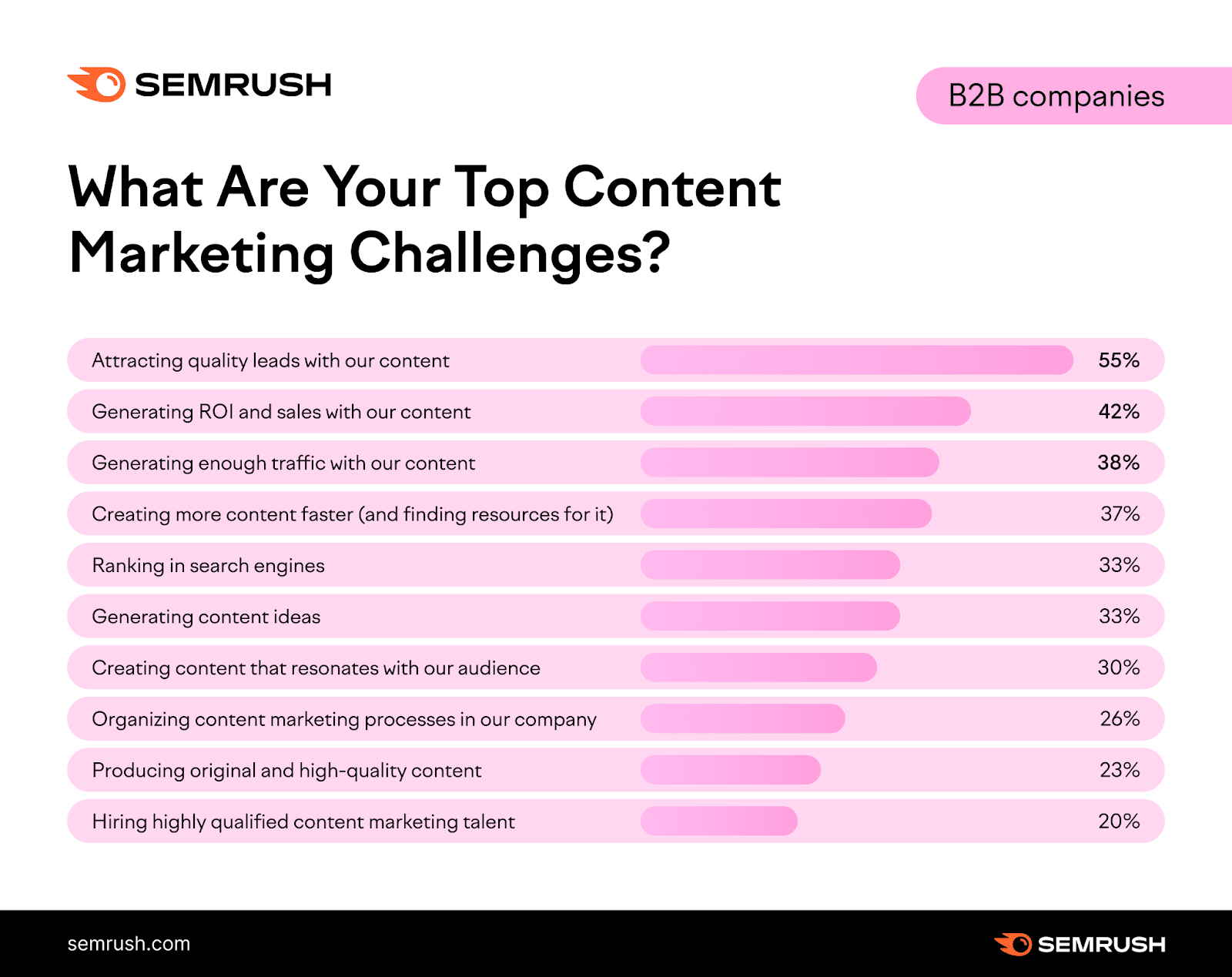
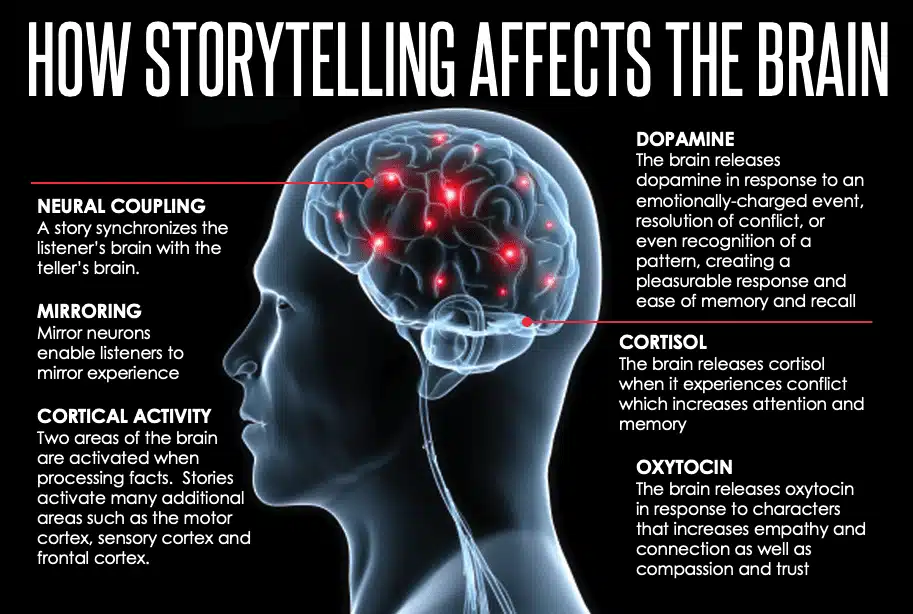
 ). Picture the obstacles that hold them back and provide practical solutions that push their story forward.
). Picture the obstacles that hold them back and provide practical solutions that push their story forward.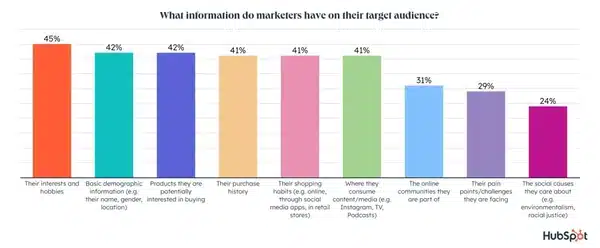


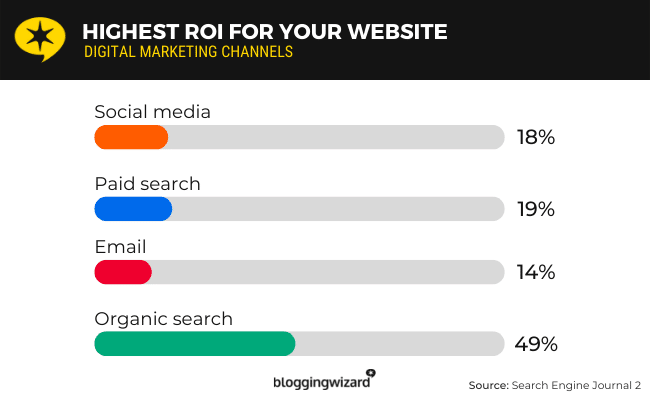
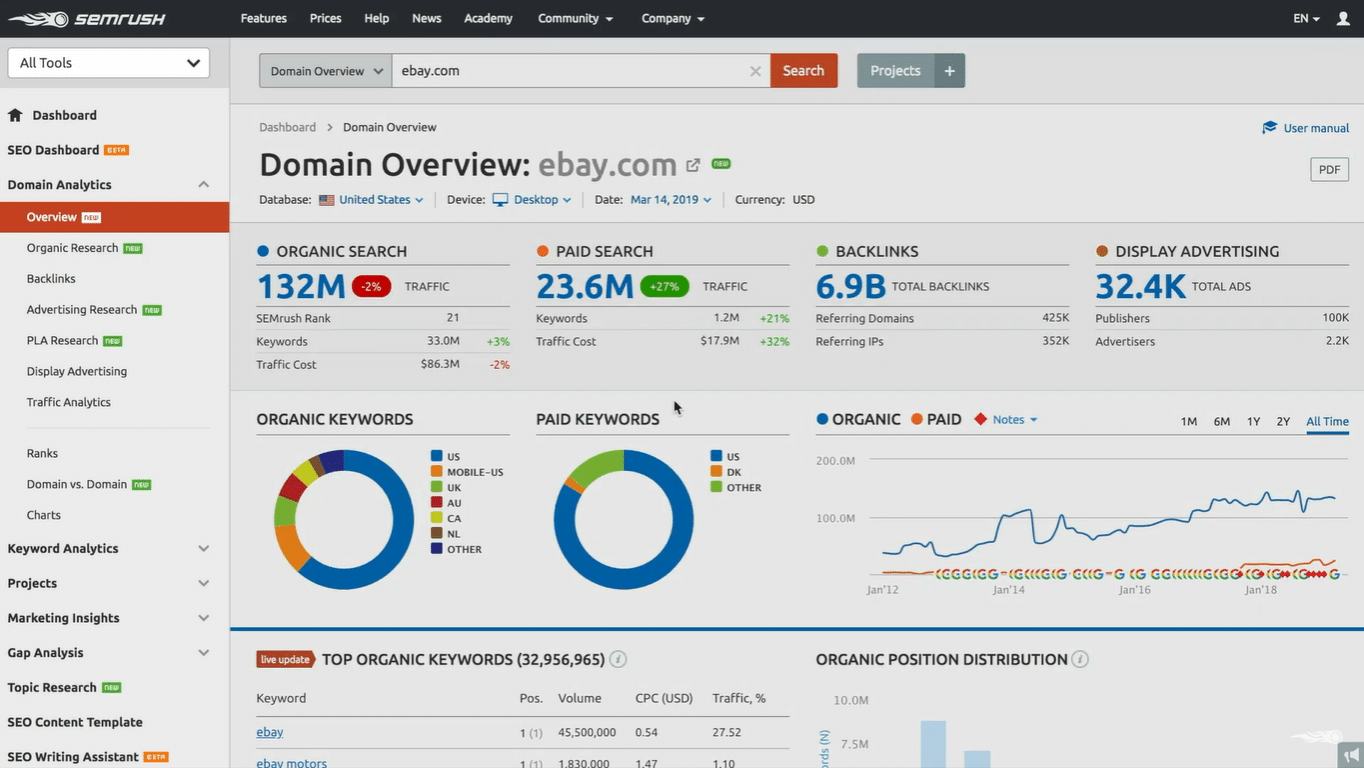
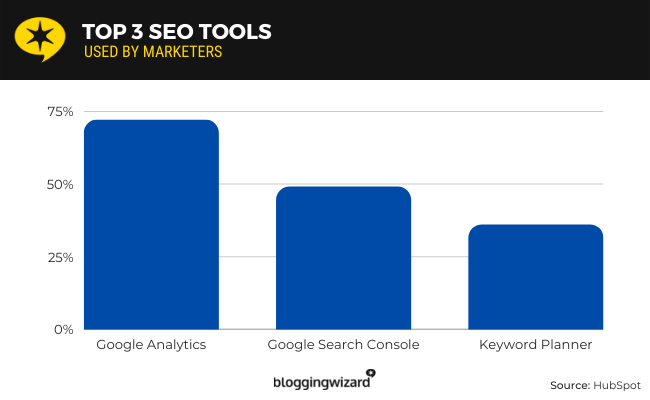
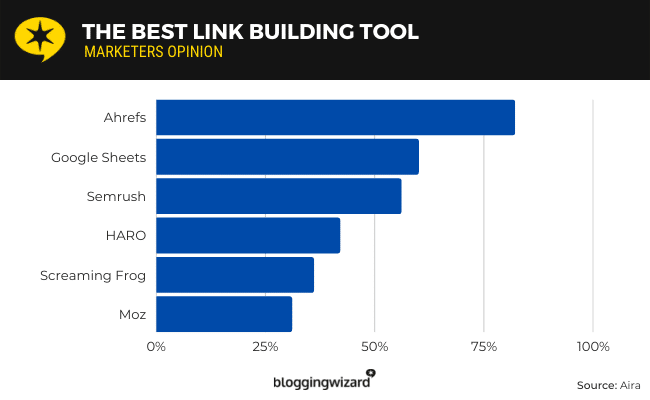
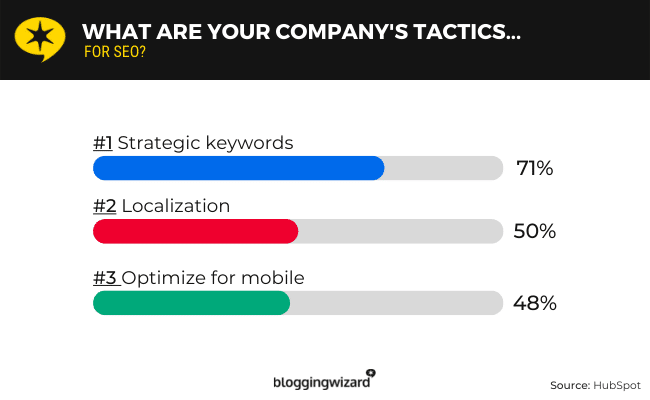
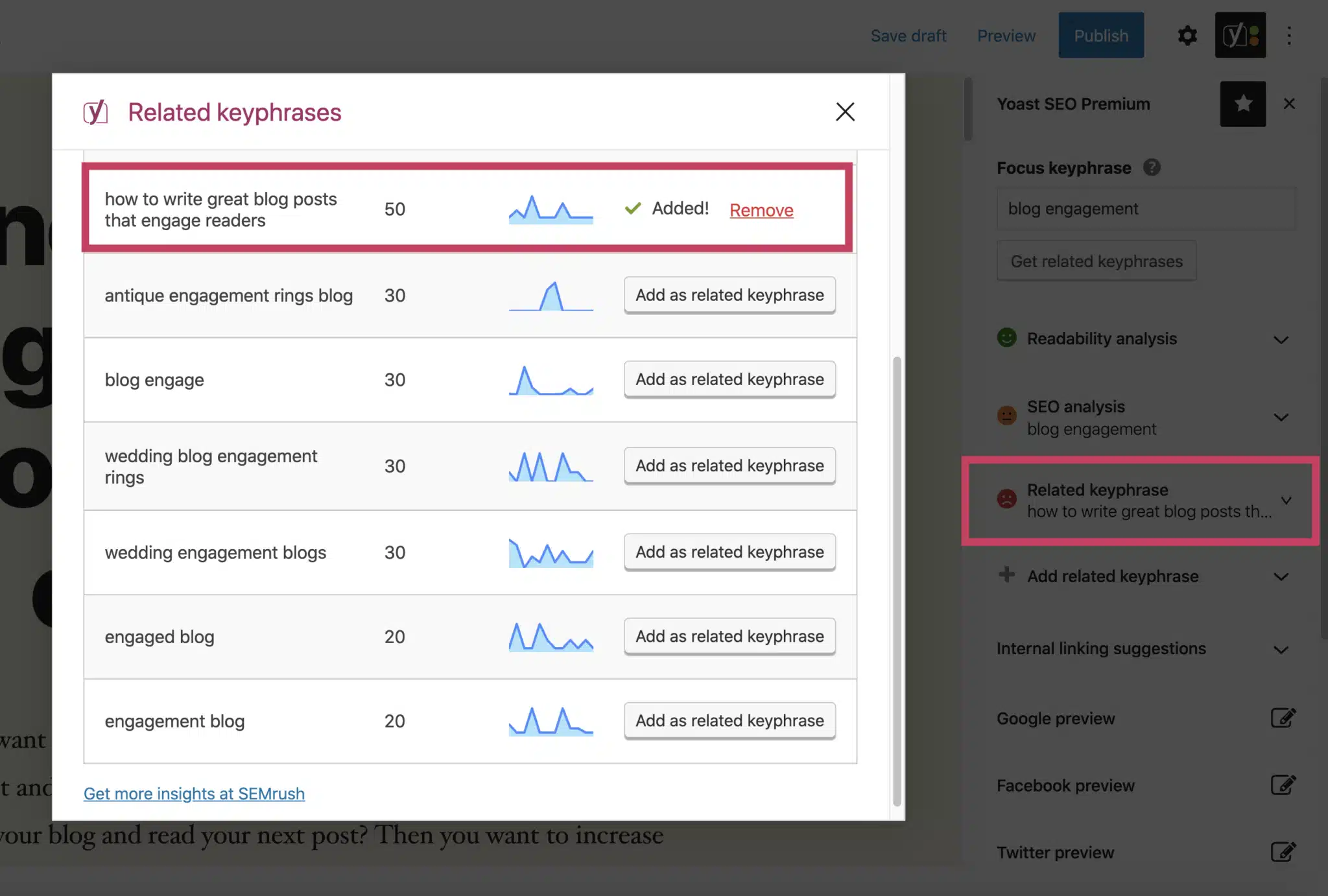
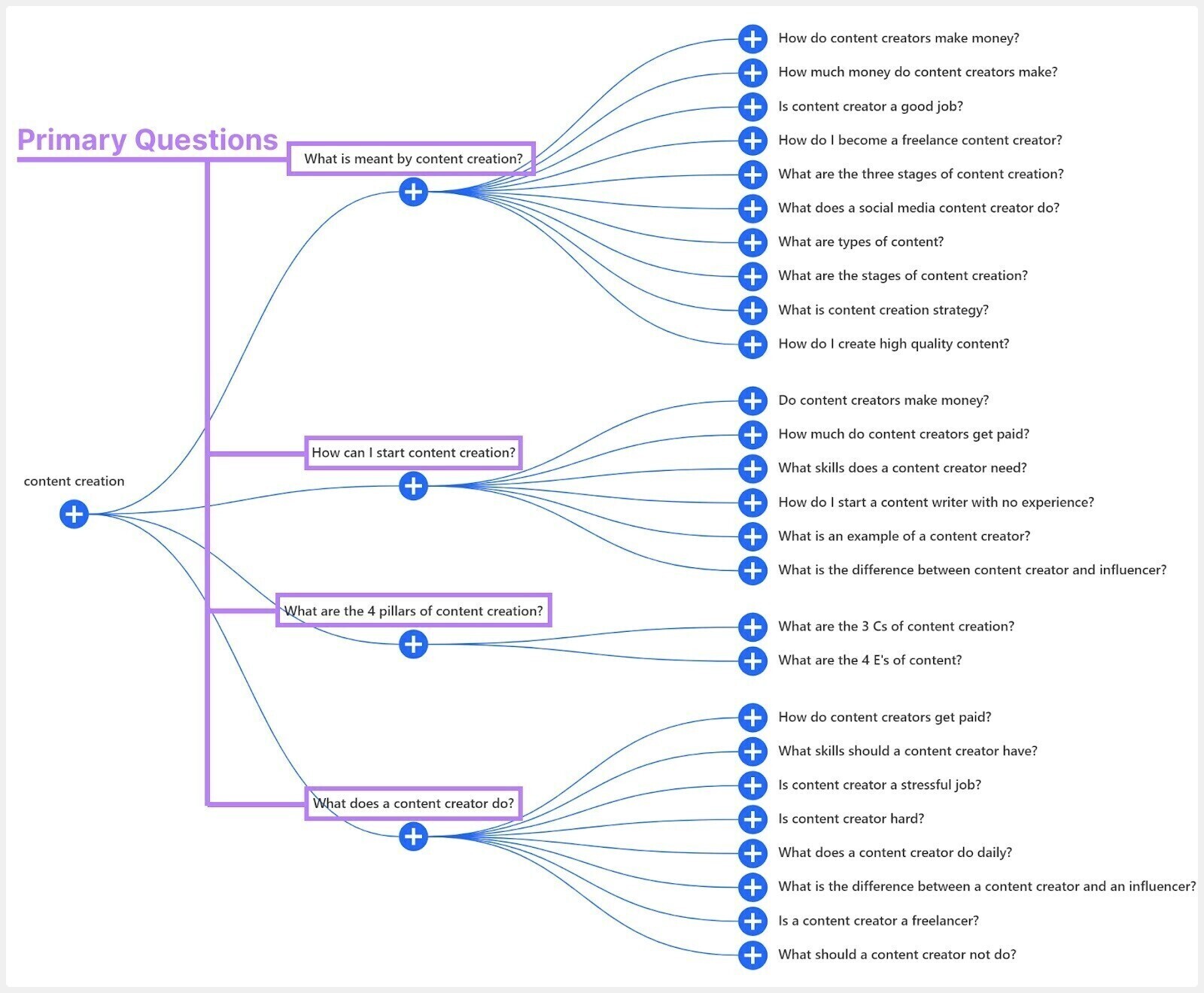
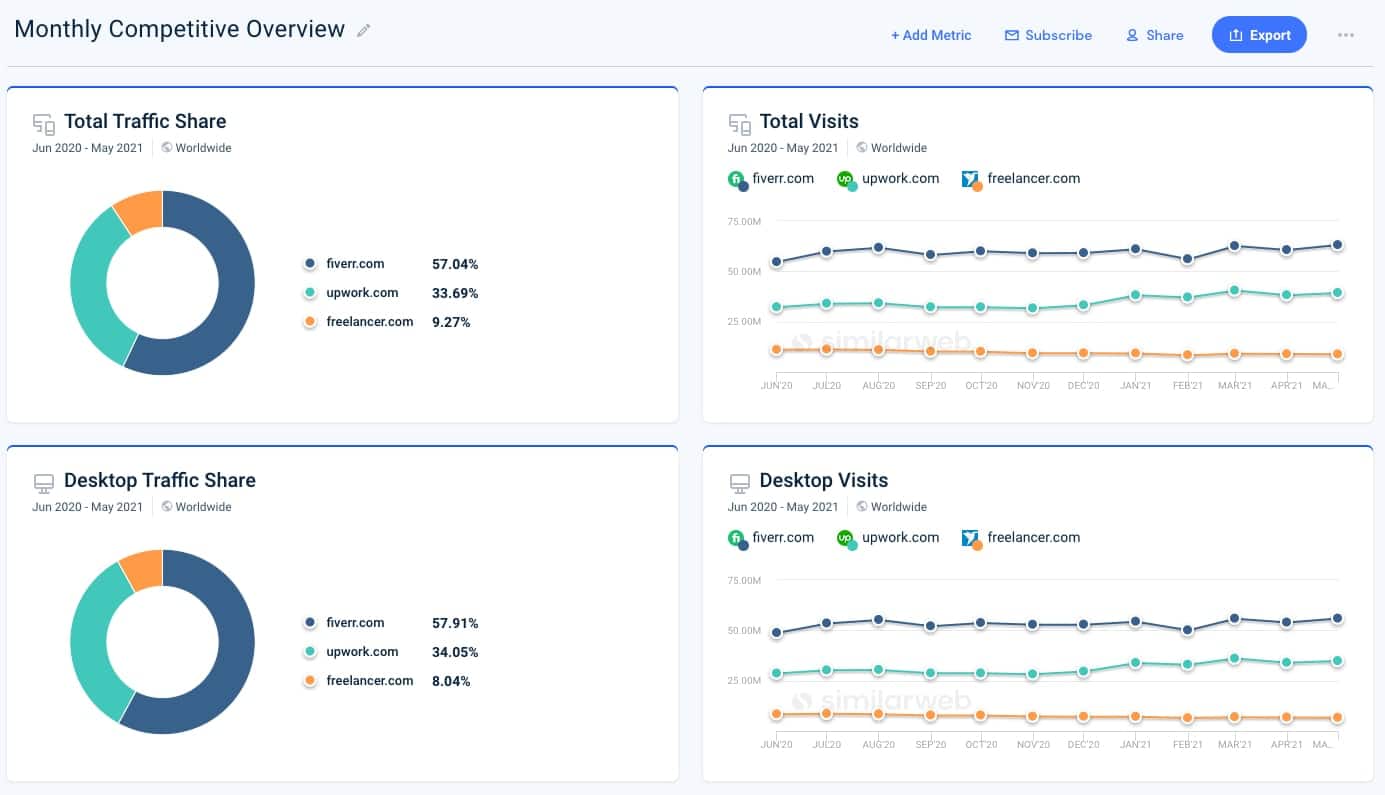
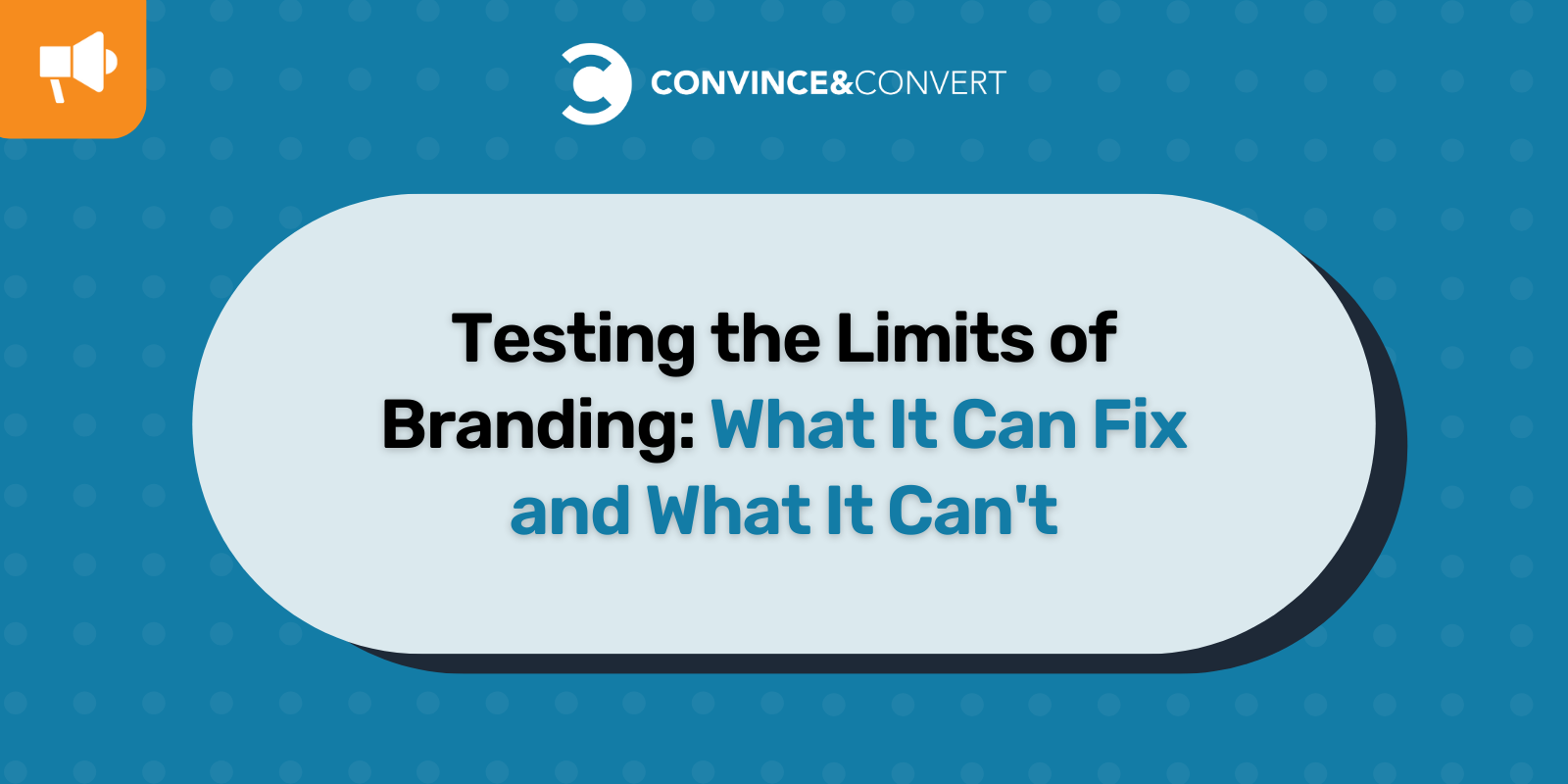
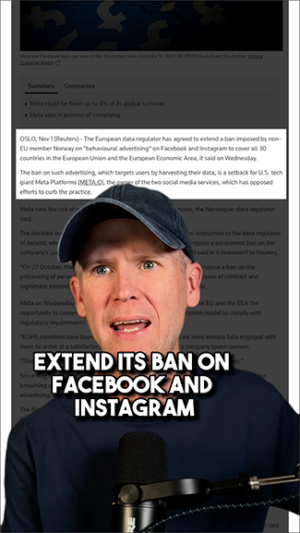
 In this episode of the Duct Tape Marketing Podcast, I interviewed Ben Guttmann,
In this episode of the Duct Tape Marketing Podcast, I interviewed Ben Guttmann, 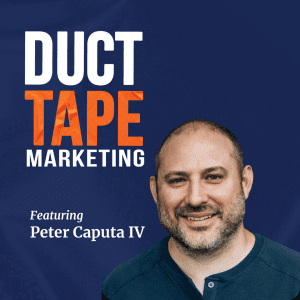 In this episode of the Duct Tape Marketing Podcast, I interviewed Peter Caputa, CEO of Databox, an innovative player in the realm of marketing analytics. With a focus on transforming raw data into actionable insights, Databox has carved out a niche for itself, offering unique solutions for businesses to visualize their metrics in a customized manner. Peter, with his rich background in data analytics and his leadership at Databox, brings a fresh perspective to the challenges and opportunities in the world of marketing analytics.
In this episode of the Duct Tape Marketing Podcast, I interviewed Peter Caputa, CEO of Databox, an innovative player in the realm of marketing analytics. With a focus on transforming raw data into actionable insights, Databox has carved out a niche for itself, offering unique solutions for businesses to visualize their metrics in a customized manner. Peter, with his rich background in data analytics and his leadership at Databox, brings a fresh perspective to the challenges and opportunities in the world of marketing analytics.